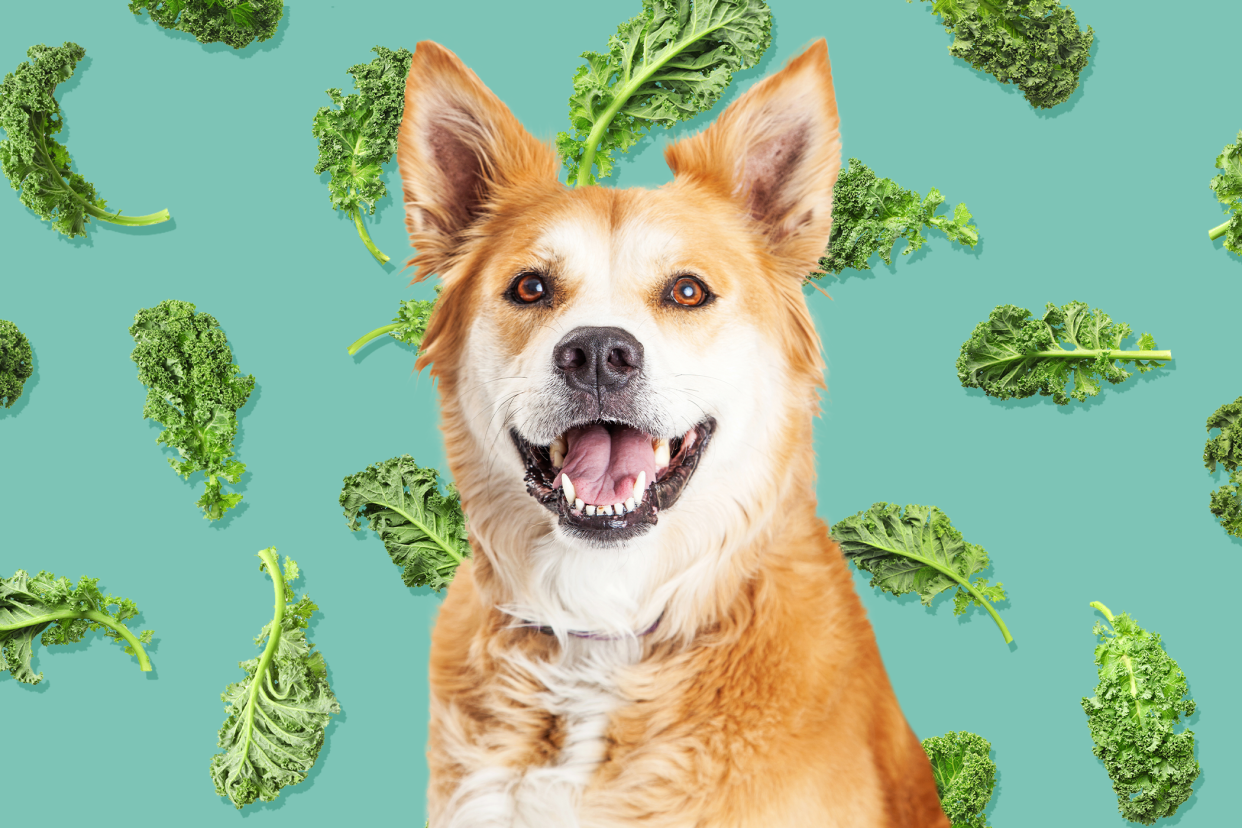Can Dogs Eat Kale? A Veterinary Nutritionist Weighs In

New Africa / adogslifephoto / Adobe Stock
Kale is everywhere these days. The leafy green has become a staple ingredient in a wide range of dishes spanning from smoothies to pizzas, but does it belong in your dog's dish?
If you were urged to eat your veggies as a child, you might be wondering if, as a pet parent, it's your turn to push these garden goodies. After all, what could be more wholesome than kale? But despite the many similarities we share with our canine companions, we certainly differ with regards to dietary needs. Moreover, what's safe for humans can sometimes prove toxic for our pups.
With these nutritional nuances in mind, we've asked Board Certified Veterinary Nutritionist Laura Gaylord, DVM, DACVIM (Nutrition), owner of Whole Pet Provisions, PLLC, to help us understand the role kale should play, if any, in a dog's diet.
Is Kale Good or Bad for Dogs?
While there's no guarantee your dog will crave crunching on kale, Gaylord says your pup will at least have no reason to fear it. "Kale can be a safe and healthy addition to almost any dog's diet," she explains. "It's described as a 'superfood' for humans, or even better as a 'functional food.' This means there's scientific evidence it contains compounds that may improve the general conditions of the body or potentially decrease the risk of some disease conditions with regular consumption."
Kale can be a great addition to your dog's dish, but it won't be the backbone of your pet's diet. "It's important to remember that your dog should already be eating a complete and balanced diet—either a commercial pet food that meets nutritional adequacy for their life stage per the Association of the American of American Feed Control Officials (AAFCO) or a homemade recipe properly formulated by a board certified veterinary nutritionist and then carefully prepared," Gaylord explains. "If the diet is complete, any additional foods (such as kale) will only provide more nutrients above these minimum recommendations."
And when it comes to nutrients, kale packs a particularly impressive punch. Gaylord notes that this member of the cruciferous family contains antioxidants and phytonutrients like glucosinolates, polyphenols, carotenoids, and terpenoids that have health and anti-cancer benefits. It's also an excellent source of vitamins (A, B family, C, and K) and minerals (calcium, potassium, magnesium, iron, zinc, and manganese).
How to Safely Feed Your Dog Kale
Gaylord says that as a general rule, it's always best to check with your veterinary team to confirm that adding any additional foods, treats, or snacks to your pet's diet is safe and appropriate. She cautions that some pets may have contraindications for additional vegetable supplementation. For example, dogs who don't tolerate additional fibers well, such as underweight pets or those with gastrointestinal diseases, and dogs who need limits on mineral or oxalate intakes in their diet to avoid forming urinary stones, may need to avoid kale. Moreover, Gaylord notes that excess fiber can even interfere with the absorption of other nutrients in your pet's diet.
If your veterinarian deems kale to be a safe treat for your dog, how much you give and how you prepare it are crucial considerations. Gaylord says that, in general, any additions to your pet's diet (whether we're talking about kale or commercial dog treats) should comprise no more than 10 percent of your dog's daily total calories. "This includes all treats and snacks given throughout the day," she explains, "so you'll need to take a complete inventory." It may seem strict, but the goal is to avoid inhibiting your pet from eating their primary diet.
RELATED: How Many Calories Should My Dog Eat?
Gaylord recommends starting with a very small quantity first to test for any adverse responses. She also notes that while raw kale is safe to eat, lightly cooking it can improve digestibility (as long as you don't add any oils, butter, or spices). "Steaming or blanching is best and may actually increase the availability of some nutrients," Gaylord continues. Be careful not to overcook, however, because it can destroy some nutrients. And it probably goes without saying, but if you do cook the kale, be sure to give it plenty of time to cool down before serving it to your pet.
Other Safe Vegetables for Dogs
Gaylord says that in her experience, dogs generally accept kale. But if your dog turns up his snout, don't despair. There are several other veggie options you can talk about with your veterinarian:
"Vegetables can make excellent low-calorie, low-cost, and safe treats for many pets," she adds. "Steamed vegetables can also provide fiber that improves stool quality and can help curb the appetite of dogs on weight management plans without adding many calories." But as with kale, check with your veterinarian before adding any of the above vegetables to your pet's diet. You can even enlist their help in calculating portion sizes that are safe and appropriate.

